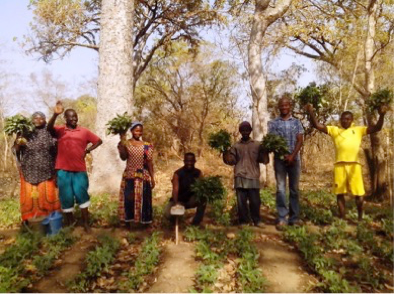Subsurface Sand Dam at Kpaloworgu
The upper west region of Ghana has an 8 month long dry season and has many ephermal river tributaries with deep sand beds. Ghana Outlook, in partnership with the Kpaloworgu community near Wa, wanted to trial the first sand dam to be built in Ghana. It would be built across a suitably identified tributary, which was believed could retain water in the upstream sand throughout the dry season. It was agreed that the Kpaloworgu community would provide all free labour and Ghana Outlook funded the skilled construction of the dam itself.
The Upper West region of Ghana is the county’s poorest region. It has an eight month long dry season with a hostile dry and dusty Harmattan wind; this flat, semi-arid Savannah terrain supports a sparsely distributed population which survives from subsistence farming rearing animals and growing millet. Supplies of water for irrigation and safe water for drinking are woefully inadequate. The Region has significant problems related to water borne disease including mortality, malnutrition, absenteeism because of illness, low income, under achievement and outward migration of young adults. Ghana Outlook has been working since 2014 with Upper West partner Coalition for Change to give some relief to these severe water, sanitation and agricultural issues.



The dam in its first dry season successfully retained water sufficiently to encourage farmers to undertake a trail plantation of crops. Water now could be extracted from the saturated riverbed and used to feed the plants. A successful harvest was the result
GO is now seeking funding support to provide a well sunk into the riverbed so that water can safely be extracted using a simple bucket method. This is seen as a stage 1 of water extraction easement. A pump could be added to the well later, once the well has proved that water remains at depth that a pump would be beneficial, and when a realistic plan for removing the pump and sealing the well at the beginning of each rainy season has been agreed.



